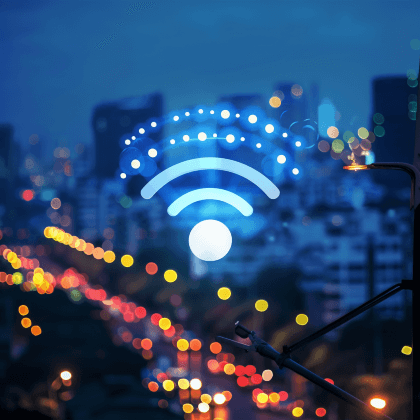
In our age of technology and fast-paced digital transformation, understanding the differences between various internet technologies is key. This article will delve into the deep end of internet connections, laying out the foundational differences between fibre and WiFi connections.
Whether you’re a tech-enthusiast, a business professional, or simply someone who enjoys streaming their favourite series, keep reading as we explore these distinct technologies and what they mean for you.
Understanding Fiber Internet
Fibre internet is essentially a type of internet connection that uses thin strands of glass to transmit information in the form of light. The speed at which fibre can send data is incredibly fast—almost at the speed of light, you might say. This type of connection has numerous distinct advantages.
Firstly, fibre internet can provide exceptionally high speeds, perfect for bandwidth-heavy activities like high-definition video streaming, online gaming or data-heavy business operations. Secondly, fibre internet has a wide bandwidth capacity, meaning it can handle many devices simultaneously without slowing down. Finally, fibre connections are known for their consistency and reliability, providing a stable internet connection that’s less likely to drop compared to traditional copper lines.
Decoding WiFi Connections
When we talk about WiFi in this context, we’re referring to a type of internet connectivity that uses a wireless service provider. It does not refer to the wireless connection between your device and router. The wireless service provider connects your router to the internet through radio signal coverage in your area, given that there is sufficient signal strength.
Similar to fibre, WiFi connections have the advantage of speed. However, WiFi connection may vary based on a multitude of factors such as distance from the tower, weather conditions, and geographic obstacles like mountains. Additionally, WiFi connections might be a practical alternative where fibre infrastructure is yet to reach, making it a go-to choice for certain remote areas.
Fibre vs WiFi
Between fibre and WiFi connections, the active debate centres around speed, reliability, and coverage. While fibre technology provides high speeds and reliability, it requires a physical infrastructure meaning it might not be available everywhere. On the other hand, WiFi connections with their wireless nature can reach broader areas but might suffer from varying connection quality and speeds.
The choice between fibre and WiFi, therefore, boils down to what’s available in your location, your specific internet requirements, and your preference for speed versus ease of accessibility.
In Conclusion
In summary, there’s indeed a significant difference between the workings of a fibre internet connection and a WiFi connection. Each comes with its unique set of characteristics and advantages. While fibre offers lightning-fast speeds and a reliable connection, WiFi’s broad geographic coverage and the ease of connectivity sometimes make it the preferred choice.
Our call to action is simple: assess your specific online requirements, research the available options in your locality and then make an informed choice. The marvels of digital connectivity are at your fingertips. Your dream of seamless online interaction could be a fibre strand or a WiFi signal away. Let’s stay invested in our journey towards the digital future. Crafting better internet experiences might be just around the corner!
